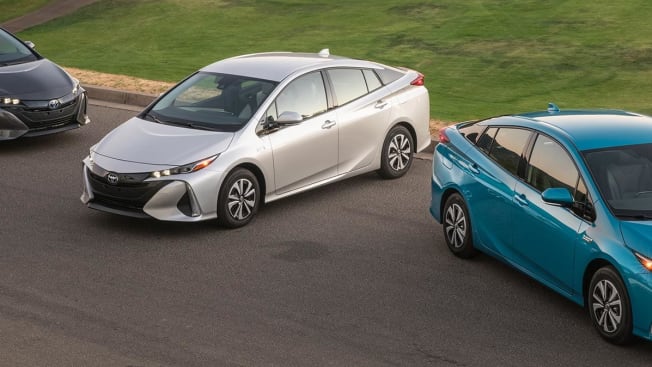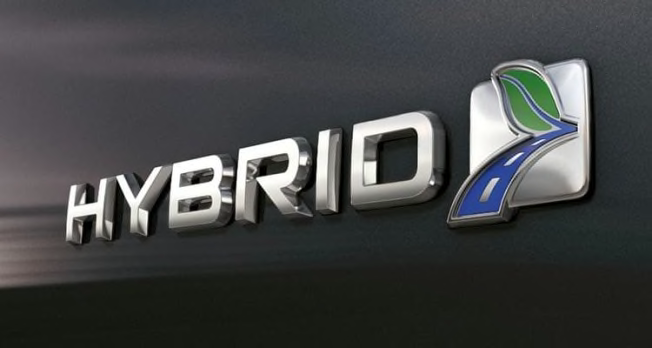Hybrids 101: Guide to Hybrid Cars
Understanding gasoline-electric hybrid cars and powertrains

Most people know by now that hybrids use electricity to achieve good gas mileage, but how their advanced powertrains work and whether they help your pocketbook is more nuanced. In this guide, we'll take a look at the basic technology and its variations.
The Theory Behind Hybrid Cars
Most people consider “hybrids” to mean full hybrids like the Toyota Prius, but there are several levels of hybridization and many gas-powered vehicles are adding some level of electrification or hybridization. What sets full hybrids apart from regular cars is that they use two powertrains: an electric motor and a gasoline engine. The electric motor draws its power from a large battery pack that is recharged by the gas engine and by energy recouped from the brakes.
Hybrids emerged as a bridge between the benefits and limitations of both electric and gasoline powertrains.
Electric motors are very efficient at accelerating, and unlike their internal-combustion counterparts, produce their maximum power from a dead stop. But batteries with enough energy to drive long distances on electricity alone are bulky, heavy, and more expensive. Recent progress in battery development has brought some new electric cars to market. But there are still a limited number of models, and while plug-in hybrids are not range limited, battery-only models have a range from 70-250 miles. For the time being, hybrids offer the best of both gasoline and electric cars.
By using electric motors to augment an internal combustion engine’s power, automakers can use smaller, more-efficient gasoline engines and rely on electric power at low speeds. By combining the two systems, the battery pack can be much smaller than in a pure electric vehicle. The downside of a hybrid is that because of the the dual drivetrains it makes the car more expensive, and the battery packs take up space and add weight.
Check our hybrid/EV buying guide.

Kia - GREG JAREM Kia - GREG JAREM
Hybrid Technologies
The gas and electric powertrains can be combined in a few different ways—some more efficient than others. Plug-in hybrids allow you to burn even less gas by running exclusively as electric cars for a short distance. We'll explain in detail.
Parallel vs. Series Hybrids
Most hybrids use a parallel design in which either the gas engine or the electric motor alone can drive the wheels, or they can work in unison. Hybrids can also have a series configuration, in which only the electric motor drives the wheels, and the gas engine works mainly as a generator to provide electricity once the battery is depleted as with the BMW i3 and Chevrolet Volt.
Micro and Mild Hybrids
Many new models incorporate some level of electrification, the best known of which is start-stop. Larger battery packs can also provide extra torque and power up driver-assist and active safety systems. An emerging technology, 48-volt batteries can provide much of the fuel efficiency benefits of full hybrids at a fraction of the cost. There aren’t currently any models using 48-volt technology in North America, but automakers are starting to roll them out in other markets and they are likely to be in the U.S. in the next several years.
Full Hybrid
These are the hybrids best known to the typical consumer. They run on electricity for a limited time at low speeds and gentle throttle. Most notable mainstream hybrid systems are made by Ford, Hyundai, General Motors, and Toyota.
Plug-in Hybrid
Plug-in hybrids are designed to be charged from the wall to work as electric cars some of the time. They normally use their electric range of between 10 and 35 miles first, and then switch to normal hybrid operation. They can be either parallel or series hybrids. Some parallel hybrids can act as series hybrids under certain conditions when it’s deemed more efficient.
Chevrolet likes people to refer to the Volt an "extended-range electric vehicle." That's accurate enough, but what it means is that the Volt fits in the category of a plug-in series hybrid. Should your trips, or commute, be within the electric-only range, plug-ins can provide the benefits of a pure electric car, while having the engine available for longer trips. (Learn about electric cars.)

Ford Ford
Hybrid Powertrains
Engines and Fuel Economy
Most hybrids use small, efficient four-cylinder gas engines. Some SUV, sports cars or luxury-car hybrids are designed to be performance boosters and use V6 or V8 engines. Most hybrids are quieter and feel less strained than their equivalent gas-only models in most situations.
Hybrids typically come with some sort of continuously variable transmission (CVT). Some hybrids, usually European models, use conventional automatic transmissions or dual-clutch automated manual types.
Drive Wheels
Hybrids can be front-, rear-, or all-wheel drive. Most small- and midsized-car hybrids are front-wheel drive, while luxury-car hybrids are rear-wheel drive. All-wheel-drive versions of the Toyota Highlander and Lexus RX 450h are nominally front-wheel drives but can power the rear wheels via an extra electric motor on the rear axle. It's light, simple, and efficient, and we've found it works well enough.
Batteries
Conventional hybrid batteries of nickel-metal hydride are quickly being replaced by lithium-ion batteries, which are smaller and lighter, for better efficiency.
Hybrid models that run nickel-metal hydride hybrid batteries typically have very good reliability in our Annual Auto Survey of our subscribers. Lithium-ion batteries are too new to have a proven long-term track record. Automakers are required to warranty the batteries on any hybrid as an emissions control part for eight years and 80,000 miles in most states. In about 10 states, they're required to warranty them for 10 years or 150,000 miles, so the automakers have a vested interest in making them durable. Outside the warranty period, new nickel-metal hydride battery replacements can run as much as $3,000, but replacements have been relatively rare. And used batteries are available for much less. Batteries in some older Ford and Honda Hybrids have been more problematic than those in more popular Toyotas.
Hybrid Car Maintenance
In our tests, we’ve found that some hybrids, such as the Toyota Prius, receive top marks in reliability and require very little maintenance, but there is variability among other makes and models. We checked with Honda and Toyota about maintenance and reviewed the service schedules of two of the most popular hybrids and found that neither requires any special maintenance beyond what a regular car needs. Coolant changes on the Prius and other Toyota hybrids might be somewhat more complicated and expensive than in regular cars, but they don't have to be done any more often. (In the Lexus RX 450h and Toyota Highlander Hybrid, there are battery-cooling vents in the rear footwells that must not be blocked.)
Toyota reports that some Priuses have more than 200,000 miles on their original batteries. Under California state law, which has guided similar regulations in Massachusetts, Maine, New York, Rhode Island, and Vermont, hybrid manufacturers are required to provide a warranty on the batteries up to 150,000 miles.
To find out whether the hybrids holds up, see our test of a 200,000-mile Toyota Prius.
See our lists of the most fuel-efficient cars and SUVs.
Are you planning to go hybrid?
Share your thoughts and experiences below.
Is an Electric or Hybrid Car Right for You?
With longer range batteries and more places to charge, electric cars are becoming a popular choice for drivers who want to reduce their consumption of fossil fuels. On the "Consumer 101" TV show, Consumer Reports' expert Mike Monticello explains to host Jack Rico what you need to know about this technology.



















